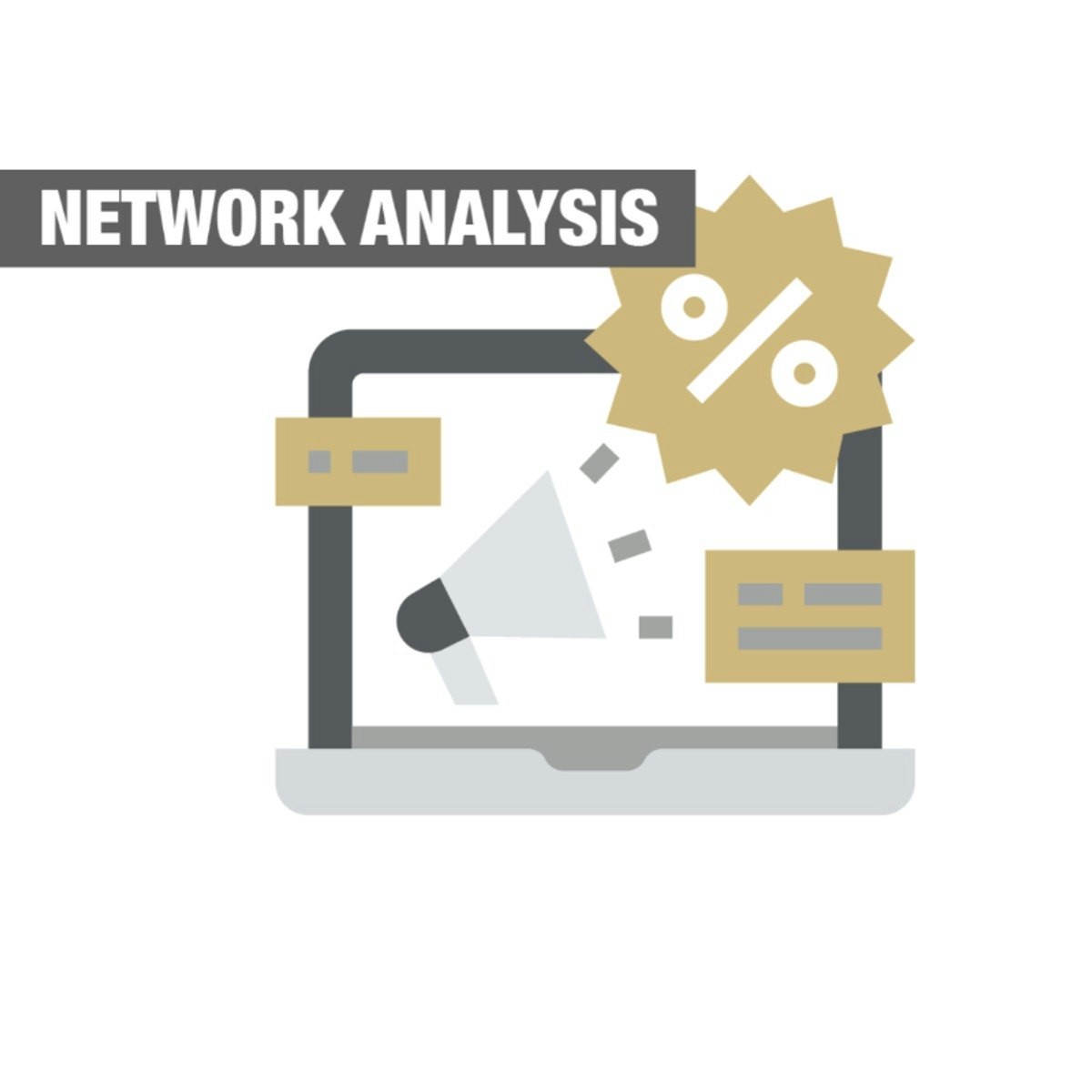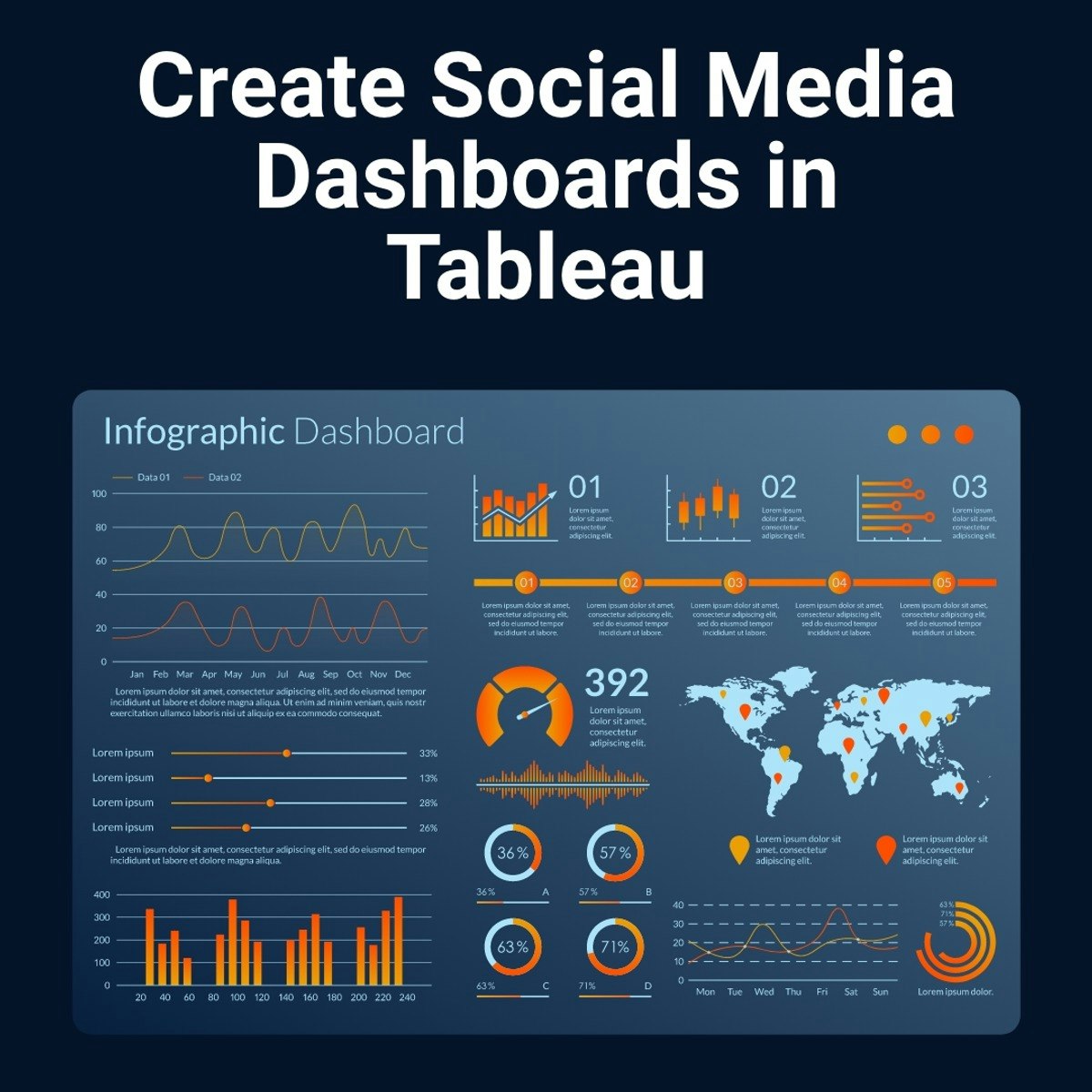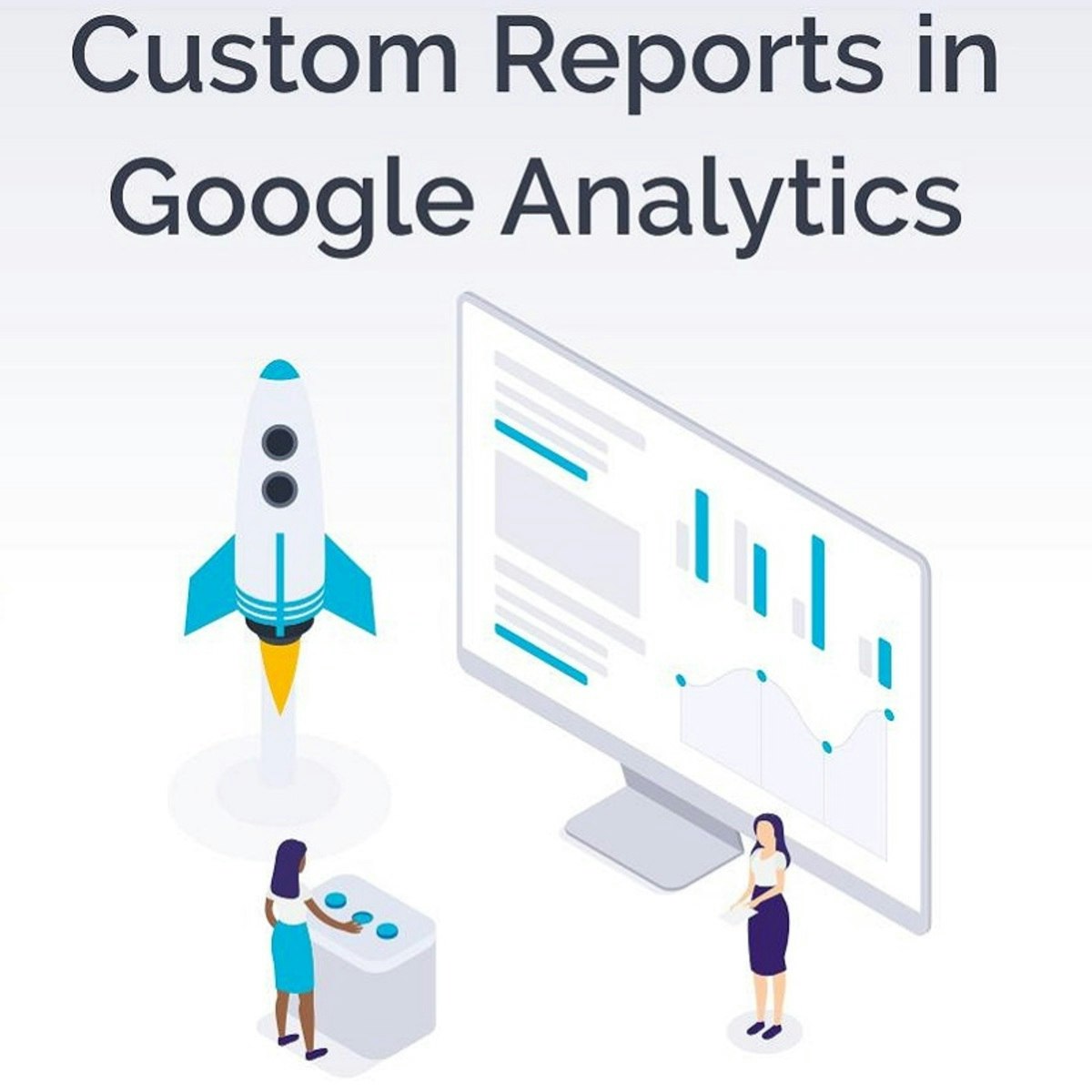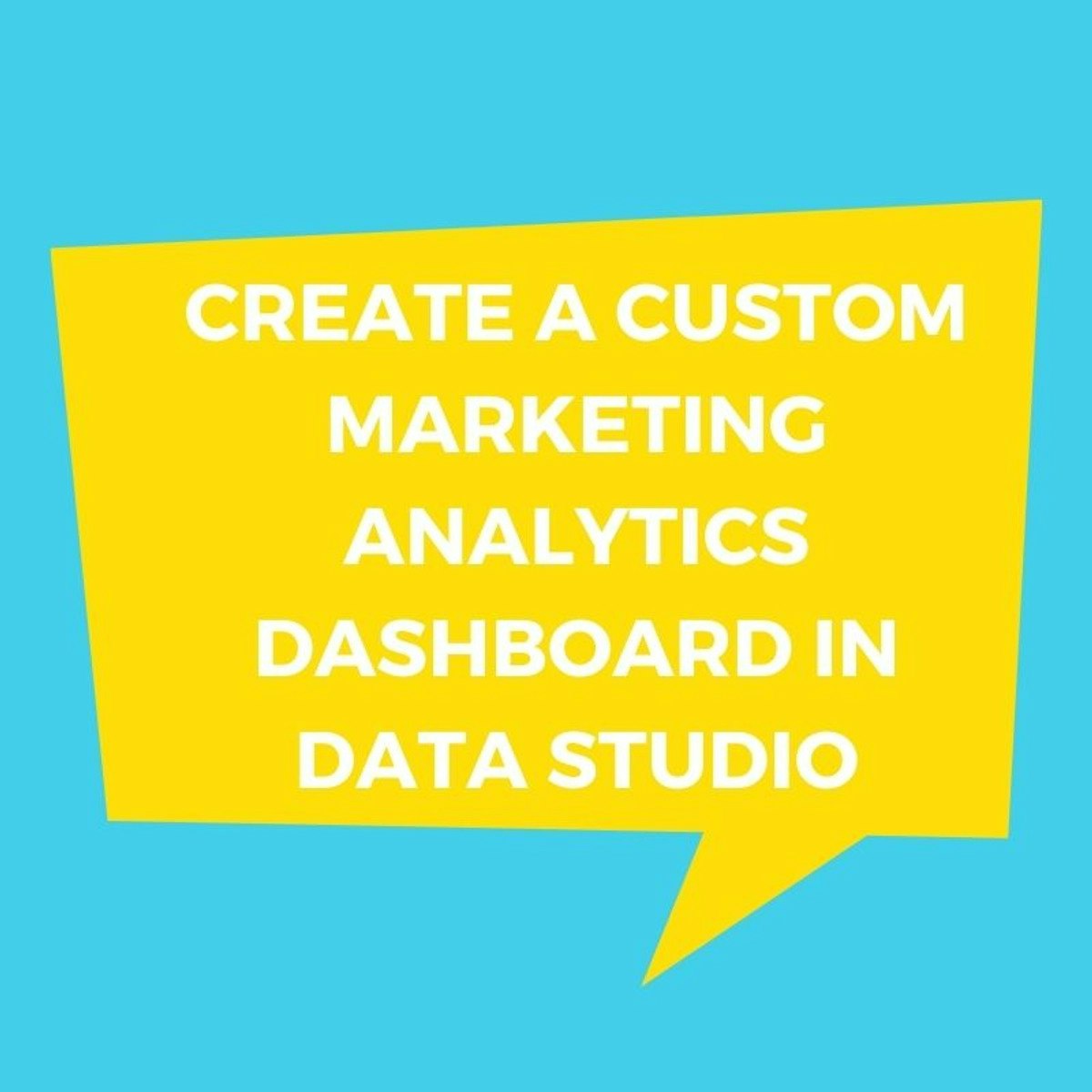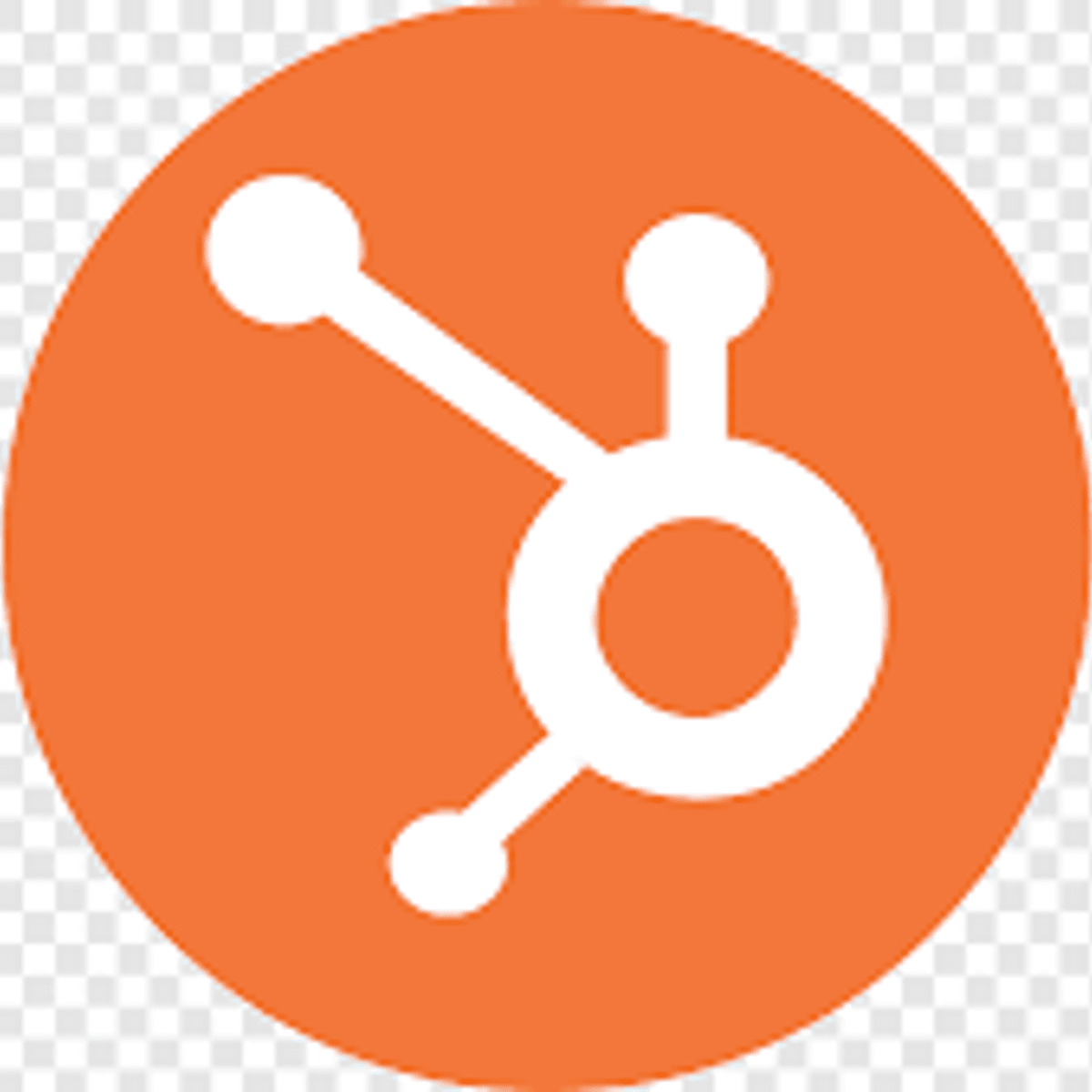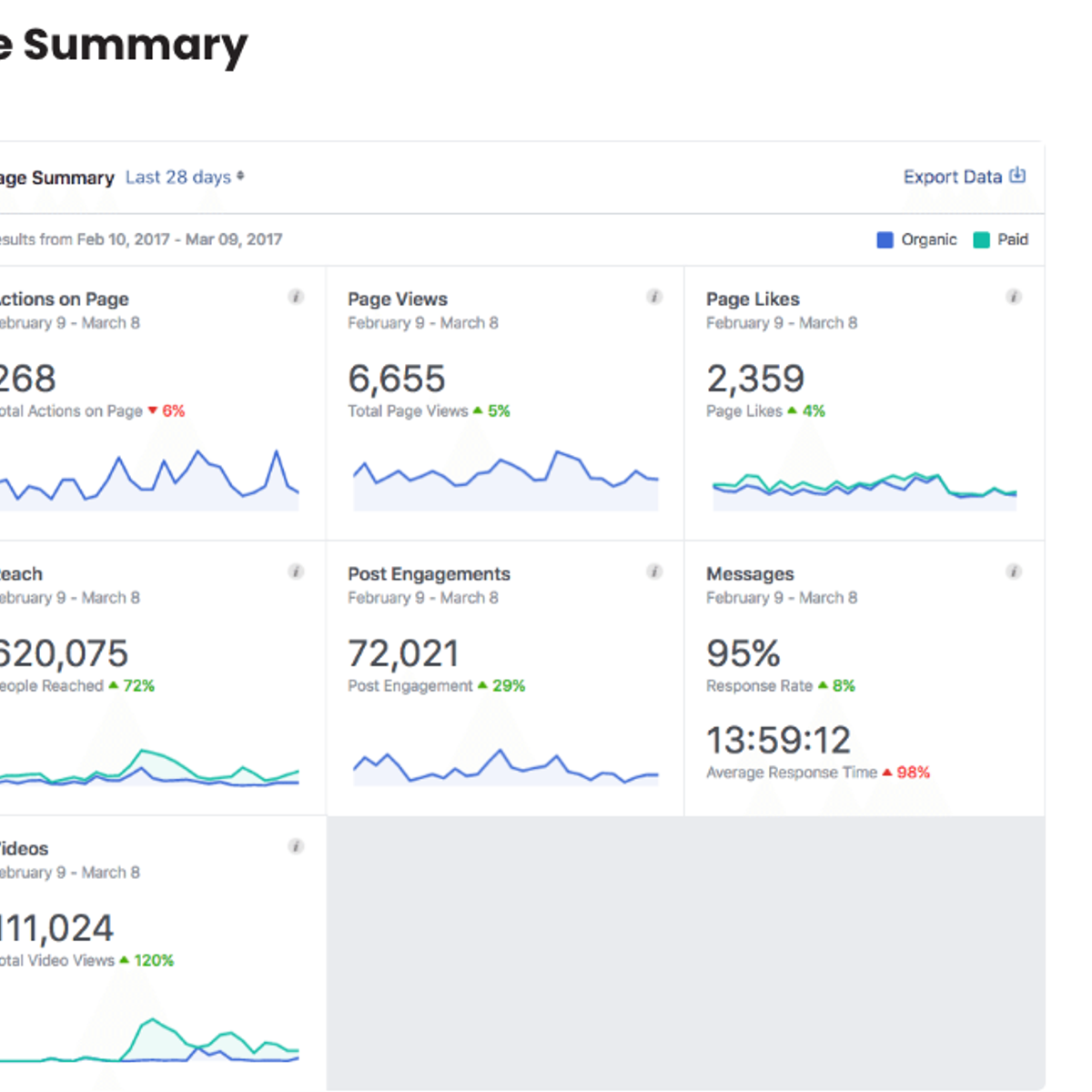Marketing Analytics
vigating the World of Marketing Analytics
Marketing Analytics is, at its core, the practice of using data to inform and improve marketing decisions. It involves collecting, measuring, analyzing, and interpreting marketing data to understand campaign performance, customer behavior, and market trends. This data-driven approach allows businesses to move beyond guesswork and make strategic choices that optimize their marketing efforts and ultimately drive growth. In a world increasingly saturated with information, the ability to extract meaningful insights from data is what sets successful marketing strategies apart.
The field of Marketing Analytics can be particularly engaging for individuals who enjoy a blend of creative problem-solving and analytical rigor. Imagine being able to pinpoint exactly which marketing channels are delivering the best return on investment, or understanding the nuances of customer preferences to craft highly personalized campaigns. It's a discipline that empowers marketers to not only justify their decisions with concrete evidence but also to continuously refine their strategies for maximum impact. The thrill of uncovering hidden patterns in data and translating those discoveries into actionable strategies that boost a company's bottom line is a significant draw for many in this field.
Defining the Scope of Marketing Analytics
To truly understand Marketing Analytics, it's helpful to define its boundaries and see how it interacts with related disciplines.
Clarifying What Marketing Analytics Encompasses
Marketing Analytics covers a broad spectrum of activities, all aimed at enhancing marketing effectiveness. This includes measurement, which involves tracking key metrics to gauge the performance of campaigns and initiatives. Reporting is another crucial aspect, where data is compiled and presented in an understandable format to stakeholders. Beyond looking at past performance, Marketing Analytics also involves predictive modeling, where historical data is used to forecast future trends and customer behaviors. Finally, optimization is a key goal, using insights gained from data to make marketing activities more efficient and impactful.
These core functions allow businesses to answer critical questions such as: Which marketing campaigns are yielding the highest return on investment (ROI)? How are customers interacting with our brand across different touchpoints? What are the most effective messages and channels for reaching our target audience? By systematically addressing these questions, Marketing Analytics provides a clear roadmap for strategic decision-making.
Organizations are increasingly recognizing the value of data-driven decision-making. Marketing Analytics provides the tools and methodologies to transform raw data into actionable intelligence that can significantly improve marketing outcomes and contribute to overall business success.
Differentiating from and Intersecting with Related Fields
While Marketing Analytics has its own distinct focus, it often intersects and shares common ground with other data-oriented disciplines. Understanding these relationships can provide a clearer picture of its unique role.
Market Research is a closely related field, but it typically focuses on gathering new data through surveys, focus groups, and other methods to understand consumer preferences, market trends, and competitive landscapes. Marketing Analytics, on the other hand, often deals with analyzing existing data generated from marketing activities and customer interactions. However, the insights from market research can provide valuable context and input for marketing analytics efforts, and vice-versa. Business Intelligence (BI) is a broader field that encompasses the technologies, applications, and practices for the collection, integration, analysis, and presentation of business information. While Marketing Analytics can be considered a subset of BI focused specifically on marketing, BI often serves a wider range of business functions, including finance, operations, and sales. Many of the tools and techniques used in BI, such as data visualization and dashboarding, are also integral to Marketing Analytics. Data Science is a multidisciplinary field that uses scientific methods, processes, algorithms, and systems to extract knowledge and insights from data in various forms. Marketing Analytics often employs data science techniques, particularly in areas like predictive modeling and customer segmentation. However, Data Science can be applied to a vast array of domains beyond marketing, such as healthcare, finance, and engineering. A Data Scientist working in a marketing context might focus on developing complex algorithms for personalization or customer lifetime value prediction.The lines between these fields can sometimes blur, and in many organizations, professionals may find themselves working on projects that span across these domains. The key is to understand the primary objective: Marketing Analytics is fundamentally about using data to make better marketing decisions and improve marketing performance.
Role Within Broader Marketing and Business Strategy
Marketing Analytics is not an isolated function; it is deeply integrated into the broader marketing strategy and, by extension, the overall business strategy. Its primary role is to provide the data-driven intelligence that informs strategic marketing decisions and ensures accountability for marketing investments.
By measuring the effectiveness of various marketing activities, analytics helps marketers understand what's working and what's not, allowing for the continuous refinement of campaigns and tactics. This iterative process of measure, analyze, and optimize is central to modern marketing. It enables businesses to allocate resources more effectively, focusing on initiatives that deliver the greatest impact.
Furthermore, the insights generated from Marketing Analytics can inform higher-level business strategy. For example, understanding customer behavior and preferences can influence product development, pricing strategies, and even market entry decisions. By providing a clear view of customer needs and market dynamics, Marketing Analytics helps align marketing efforts with overarching business goals, ensuring that marketing contributes directly to the company's success.
To build a foundational understanding of general marketing principles which marketing analytics supports, these courses may be helpful.
Fundamental Concepts and Methodologies
A solid grasp of core statistical concepts and marketing-specific analytical techniques is essential for anyone looking to delve into Marketing Analytics. These methodologies provide the toolkit for transforming raw data into meaningful insights.
Core Statistical Concepts
At the heart of Marketing Analytics lie several fundamental statistical concepts that help analysts make sense of data and draw valid conclusions. Understanding these concepts is crucial for interpreting results accurately and making sound, evidence-based decisions.
Correlation measures the statistical relationship between two variables, indicating whether and how strongly they are related. For instance, a marketing analyst might examine the correlation between advertising spend and website traffic. It's important to remember that correlation does not imply causation; just because two variables move together doesn't mean one causes the other. Regression analysis is a set of statistical processes for estimating the relationships between a dependent variable and one or more independent variables. For example, regression can be used to model how factors like price, advertising, and seasonality affect sales. This can help in understanding the impact of different marketing levers. Significance testing (or hypothesis testing) is used to determine whether an observed effect is statistically significant or if it could have occurred by chance. For instance, if a new ad campaign leads to a 5% increase in sales, significance testing can help determine if this increase is a real effect of the campaign or just random variation.These are just a few examples, and a deeper understanding of statistics will undoubtedly benefit anyone in this field. Many online courses offer excellent introductions to statistical concepts relevant to analytics.
These courses offer a good introduction to statistics relevant for marketing.
Key Marketing-Specific Analysis Techniques
Beyond general statistical methods, Marketing Analytics employs several techniques tailored to specific marketing challenges and objectives. These techniques help businesses understand their customers better, optimize their campaigns, and measure the impact of their marketing efforts.
Customer Segmentation involves dividing a broad target market into smaller, more defined groups of customers who have similar needs, characteristics, or behaviors. This allows businesses to tailor their marketing messages and offers to specific segments, increasing relevance and effectiveness. For example, a company might segment its customers based on demographics, purchase history, or engagement levels. A/B Testing (also known as split testing) is a method of comparing two versions of a webpage, email, ad, or other marketing asset to determine which one performs better. For instance, a marketer might test two different headlines for an email to see which one results in a higher open rate. A/B testing allows for data-driven optimization of marketing elements. Marketing Mix Modeling (MMM) uses statistical analysis, often regression-based, to quantify the impact of various marketing inputs (like advertising spend across different channels, pricing, promotions) on sales or market share. MMM helps businesses understand the effectiveness of their different marketing activities and optimize their marketing budget allocation. Attribution Models attempt to determine which marketing touchpoints or channels should receive credit for a conversion (e.g., a sale or a lead). In today's multi-channel marketing environment, customers often interact with a brand multiple times before converting. Attribution models (e.g., first-touch, last-touch, linear, time-decay) provide different ways to assign value to these touchpoints, helping marketers understand the customer journey and optimize channel investments. However, it's worth noting that marketing attribution can be complex and has its challenges.The following courses can provide a deeper understanding of these specialized marketing analysis techniques.
Predictive Analytics in Marketing
Predictive analytics uses historical data, statistical algorithms, and machine learning techniques to make predictions about future outcomes. In marketing, this can be incredibly powerful for anticipating customer behavior and market trends.
One common application is churn prediction, where models are built to identify customers who are likely to stop using a product or service. By identifying these at-risk customers early, businesses can take proactive steps to retain them.
Another important application is predicting Customer Lifetime Value (CLV). CLV is a prediction of the net profit attributed to the entire future relationship with a customer. Understanding CLV helps businesses make decisions about customer acquisition costs, retention efforts, and resource allocation towards different customer segments.
Predictive analytics can also be used for lead scoring (identifying which leads are most likely to convert), demand forecasting (predicting future sales of products or services), and personalizing marketing messages and offers. The ability to anticipate future events allows marketers to be more proactive and strategic in their approach.
These books delve into the application of data science and predictive methods in marketing.
The Importance of Data Visualization
Communicating insights effectively is just as important as generating them. Data visualization plays a critical role in Marketing Analytics by transforming complex datasets and analytical results into easily understandable visual formats, such as charts, graphs, and dashboards.
Well-designed visualizations can help identify trends, patterns, and outliers that might be missed in raw data tables. They make it easier for stakeholders, including those without a technical background, to grasp the key findings and their implications. This facilitates better decision-making and helps to tell a compelling story with data.
Tools like Tableau, Power BI, and even the built-in charting capabilities of Excel or Google Sheets are commonly used to create these visualizations. The ability to present data in a clear, concise, and visually appealing manner is a valuable skill for any marketing analyst.
Consider these courses to learn more about visualizing marketing data.
Essential Tools and Technologies
To effectively practice Marketing Analytics, professionals rely on a variety of tools and technologies. These range from web analytics platforms that track website activity to sophisticated programming languages used for complex data analysis.
Common Web Analytics Platforms
Web analytics platforms are fundamental for understanding how users interact with websites and online content. They provide data on website traffic, user behavior, conversion rates, and much more.
Google Analytics is one of the most widely used web analytics services. It allows businesses to track website performance, analyze audience demographics and behavior, and measure the effectiveness of online marketing campaigns. Its features include real-time data reporting, audience segmentation, and conversion tracking. Many marketers start their analytics journey by learning how to leverage the power of Google Analytics.Other platforms like Adobe Analytics offer similar robust capabilities, often catering to larger enterprises with complex data needs. These tools are essential for digital marketers and analysts to understand online performance and optimize the user experience.
These courses provide an introduction to web analytics tools and concepts.
This book is a classic resource for understanding web analytics in depth.
Data Visualization Tools
As mentioned earlier, data visualization is key to communicating insights. Several dedicated tools help analysts create compelling and informative visualizations from their data.
Tableau is a popular data visualization tool that allows users to create interactive dashboards and worksheets. It can connect to a wide variety of data sources and offers a drag-and-drop interface for building visualizations. Microsoft Power BI is another widely used business analytics service that provides interactive visualizations and business intelligence capabilities with an easy-to-use interface.These tools enable analysts to explore data visually, identify patterns, and share insights in a way that is accessible to a broad audience. The ability to effectively use such tools is a valuable asset for marketing analysts.
The following courses can help you get started with prominent data visualization tools used in marketing.
Relevant Programming Languages and Libraries
For more advanced analysis, customization, and handling large datasets, programming languages are often employed in Marketing Analytics.
SQL (Structured Query Language) is essential for retrieving and managing data stored in relational databases. Marketing analysts frequently use SQL to extract specific datasets for analysis, filter information, and join data from multiple tables. A good understanding of SQL is a highly sought-after skill. Python and R are two popular open-source programming languages widely used in data analysis and data science. Both offer extensive libraries and packages specifically designed for statistical analysis, machine learning, data visualization, and data manipulation. For example, Python libraries like Pandas, NumPy, Matplotlib, and Scikit-learn are staples in an analyst's toolkit. R is particularly strong in statistical modeling and graphical capabilities. Proficiency in one or both of these languages can significantly enhance an analyst's capabilities.Learning a programming language can greatly expand your analytical capabilities. These resources can get you started.
CRM and CDP Systems as Data Sources
Customer Relationship Management (CRM) systems and Customer Data Platforms (CDPs) are critical sources of data for Marketing Analytics.
CRM systems, such as Salesforce or HubSpot, store vast amounts of information about customer interactions, sales history, communication logs, and customer service records. Analyzing CRM data can provide deep insights into customer behavior, sales pipeline performance, and customer lifetime value. CDPs are designed to collect and unify customer data from various sources (e.g., website, mobile app, email, CRM, offline interactions) to create a single, coherent, and complete view of each customer. This unified customer profile is invaluable for personalization, targeted marketing, and sophisticated analytics.Effectively leveraging data from CRM and CDP systems allows marketing analysts to gain a holistic understanding of their customers and tailor their strategies accordingly.
Understanding how to leverage data from platforms like HubSpot can be very beneficial.
The Role of Spreadsheet Software
Despite the availability of more specialized tools, spreadsheet software like Microsoft Excel and Google Sheets remains an indispensable tool for many marketing analysts, especially for basic analysis, data manipulation, and reporting.
Spreadsheets are excellent for organizing smaller datasets, performing quick calculations, creating simple charts and graphs, and building basic models. Many analysts use spreadsheets for initial data exploration, cleaning, and preparing data for more advanced analysis in other tools. Proficiency in spreadsheet functions, formulas, pivot tables, and charting is often a fundamental requirement for entry-level marketing analytics roles.
Even with advanced tools, spreadsheet skills are fundamental. These courses can help you master Excel for marketing analytics.
Key Applications and Case Studies
Marketing Analytics isn't just theoretical; it has tangible applications across various marketing functions, leading to measurable business impact. Seeing how it's used in real-world scenarios can illuminate its value.
Optimizing Digital Marketing Campaigns
Digital marketing encompasses a wide range of channels, including Search Engine Marketing (SEM), Search Engine Optimization (SEO), social media marketing, email marketing, and display advertising. Marketing Analytics is crucial for optimizing performance across all these channels.
For SEM campaigns (e.g., Google Ads), analytics helps track metrics like click-through rates (CTR), cost-per-click (CPC), conversion rates, and return on ad spend (ROAS). By analyzing this data, marketers can refine their keyword targeting, ad copy, and bidding strategies to improve campaign efficiency and effectiveness.
In SEO, analytics tools monitor organic search rankings, website traffic from search engines, and user engagement with organic content. This data informs content strategy, keyword optimization, and technical SEO improvements to enhance visibility in search results.
For social media marketing, analytics tracks engagement metrics (likes, shares, comments), reach, follower growth, and conversions driven by social media activities. These insights help tailor content, optimize posting schedules, and understand audience preferences on different platforms.
These courses provide insights into applying analytics in various digital marketing contexts.
Customer Lifecycle Marketing
Marketing Analytics plays a vital role throughout the entire customer lifecycle, from attracting new customers to retaining existing ones and fostering loyalty.
During the acquisition phase, analytics helps identify the most effective channels and campaigns for attracting new customers. It measures metrics like customer acquisition cost (CAC) and conversion rates from various sources.
In the engagement phase, analytics tracks how customers interact with a brand's content, products, and services. This can include website behavior, email engagement, and app usage. These insights help optimize the customer experience and deliver relevant content.
For retention, analytics helps identify factors that contribute to customer churn and develop strategies to improve customer loyalty. Techniques like churn prediction models can proactively identify at-risk customers, allowing businesses to intervene with targeted retention efforts. Building customer loyalty often involves understanding what truly satisfies customers and delivering on those expectations consistently.
Understanding and influencing customer behavior is key. This topic explores the foundations of consumer behavior.
Pricing Strategy and Promotion Effectiveness
Analytics provides valuable data for optimizing pricing strategies and evaluating the effectiveness of promotional campaigns. By analyzing sales data in conjunction with pricing changes and competitor pricing, businesses can understand price elasticity and identify optimal price points that maximize revenue or profit.
When it comes to promotions, analytics helps measure their impact on sales, customer acquisition, and profitability. For example, marketers can use A/B testing to compare the effectiveness of different promotional offers or analyze sales lift during promotional periods. This data-driven approach ensures that promotional spending is effective and contributes to business objectives.
Brief Case Study Examples (Anonymized)
To illustrate the impact of Marketing Analytics, consider these anonymized examples:
An e-commerce company used web analytics to identify a significant drop-off point in their checkout process. By analyzing user behavior data, they discovered a confusing step in the payment form. After redesigning the form based on these insights, they saw a 15% increase in completed purchases and a significant reduction in cart abandonment.
A software-as-a-service (SaaS) provider implemented a predictive churn model using customer usage data and support ticket history. The model identified customers with a high probability of unsubscribing. The company then launched a targeted retention campaign aimed at these at-risk customers, offering personalized support and incentives. This resulted in a 10% reduction in customer churn over six months.
A retail chain used marketing mix modeling to analyze the effectiveness of their advertising spend across TV, radio, print, and digital channels. The model revealed that their digital advertising was yielding a significantly higher ROI than their traditional media spend. As a result, they reallocated a portion of their budget from print to digital, leading to a 5% increase in overall sales with the same marketing budget.
These examples highlight how applying analytical techniques to marketing data can lead to concrete improvements in business performance.
Informing Product Development and Market Entry
The insights gleaned from Marketing Analytics can extend beyond optimizing existing marketing efforts; they can also inform strategic decisions related to product development and market entry.
By analyzing customer feedback, purchase patterns, and market trends, businesses can identify unmet customer needs or pain points. This information can be invaluable for guiding the development of new products or features that better address customer demands. For instance, if analytics reveal that many customers are searching for a specific feature that a product currently lacks, this could be a strong signal for the product development team.
Similarly, when considering entry into new markets, Marketing Analytics can help assess market size, potential demand, and the competitive landscape. Analyzing demographic data, online search behavior, and social media conversations in a target region can provide insights into the viability of a new market and help tailor the market entry strategy.
The following courses demonstrate the practical application of marketing analytics for business impact.
Measuring Marketing Performance
A critical function of Marketing Analytics is the systematic measurement of marketing performance. This involves defining key metrics, tracking them consistently, and using this information to evaluate the effectiveness of marketing strategies and investments.
The Concept of Key Performance Indicators (KPIs)
Key Performance Indicators (KPIs) are specific, measurable values that indicate how effectively a company is achieving key business objectives. In a marketing context, KPIs are used to track progress towards marketing goals and evaluate the performance of campaigns, channels, and overall marketing efforts.
Choosing the right KPIs is crucial. They should align directly with strategic marketing objectives and provide actionable insights. For example, if a primary goal is to increase brand awareness, relevant KPIs might include website traffic, social media reach, and brand mentions. If the goal is lead generation, KPIs could be the number of new leads, cost per lead, and lead-to-customer conversion rate.
Well-defined KPIs provide a clear framework for measuring success and identifying areas for improvement. They enable marketers to demonstrate the value of their activities and make data-driven decisions to optimize performance.
Common Marketing KPIs
While specific KPIs can vary significantly depending on the industry, business goals, and marketing activities, some are commonly used across many organizations.
Conversion Rate: The percentage of users or visitors who complete a desired action, such as making a purchase, filling out a form, or subscribing to a newsletter. This is a fundamental metric for measuring the effectiveness of calls-to-action and landing pages. Customer Acquisition Cost (CAC): The total cost of sales and marketing efforts required to acquire a new customer. CAC is a critical metric for understanding the efficiency of customer acquisition strategies. Return on Ad Spend (ROAS): A measure of the revenue generated for every dollar spent on advertising. It's calculated by dividing the revenue attributed to an ad campaign by the cost of that campaign. ROAS helps evaluate the profitability of advertising efforts. Customer Lifetime Value (CLV): A prediction of the total net profit a company can expect to earn from an average customer over the entire duration of their relationship. CLV is a crucial metric for understanding long-term customer value and informing decisions about customer acquisition and retention spending.Other common KPIs include website traffic, bounce rate, email open rates, click-through rates (CTR), social media engagement rates, and lead generation volume. The selection of KPIs should always be guided by the specific goals of the marketing initiative being measured.
Marketing Dashboards for Monitoring Performance
Marketing dashboards are visual tools that consolidate and display key marketing KPIs and metrics in a single, easy-to-understand interface. They provide a real-time or near real-time overview of marketing performance, allowing marketers to quickly identify trends, spot issues, and track progress towards goals.
Effective dashboards present information clearly and concisely, often using charts, graphs, and scorecards. They can be customized to display the metrics most relevant to specific users or teams. For example, a digital marketing manager might have a dashboard focusing on website traffic, conversion rates, and campaign performance, while a social media specialist might focus on engagement metrics and follower growth.
Tools like Google Data Studio (now Looker Studio), Tableau, Power BI, and various marketing automation platforms offer robust dashboarding capabilities. Dashboards are essential for continuous performance monitoring and facilitating agile decision-making.
Setting Goals and Benchmarks
Effective performance measurement requires clear goals and benchmarks. Goals define what marketing efforts aim to achieve (e.g., "increase website conversion rate by 10% in the next quarter"). Benchmarks provide a point of reference for evaluating performance. These can be based on past performance, industry averages, or competitor performance.
Setting realistic and measurable goals is crucial for focusing marketing efforts and providing a clear target to strive for. Benchmarks help contextualize performance, indicating whether results are good, average, or below expectations. Regularly reviewing performance against goals and benchmarks allows marketers to identify successes, diagnose problems, and make necessary adjustments to their strategies.
Challenges in Accurate Measurement
Despite the advancements in analytics tools and techniques, accurately measuring marketing performance can still be challenging. One of the most significant challenges is attribution complexity. As mentioned earlier, determining how much credit each marketing touchpoint deserves for a conversion can be difficult, especially with complex customer journeys spanning multiple channels and devices. Different attribution models can yield different results, and choosing the most appropriate model is not always straightforward.
Data quality and integration can also pose challenges. Marketing data often comes from various sources, and ensuring its accuracy, consistency, and completeness can be difficult. Integrating data from disparate systems to get a unified view of performance can also be technically complex. Issues like ad fraud can further complicate accurate measurement by introducing noisy or misleading data.Another challenge is isolating the impact of specific marketing activities from other influencing factors, such as seasonality, economic conditions, or competitor actions. While techniques like marketing mix modeling aim to address this, it remains a complex analytical task. Recognizing and addressing these measurement challenges is an important part of the Marketing Analytics process.
These courses focus on the critical aspect of measuring marketing outcomes.
This book offers a comprehensive look at marketing metrics.
Formal Education Pathways
For those aspiring to build a career in Marketing Analytics, several formal education pathways can provide the necessary knowledge and credentials. The journey often begins with foundational coursework in high school and progresses through undergraduate and potentially postgraduate studies.
High School Preparation
While specific high school requirements are generally broad, a strong foundation in certain subjects can be particularly beneficial for students considering a future in Marketing Analytics. Courses in mathematics, especially those covering algebra, statistics, and probability, will provide essential quantitative skills. Introductory statistics courses, if available, are highly recommended as they introduce core concepts used in data analysis.
Basic computer science or programming courses can also be advantageous, providing early exposure to computational thinking and potentially some foundational coding skills. Strong communication skills, developed through English and humanities courses, are also important, as analysts need to effectively convey their findings. Overall, a well-rounded academic preparation with an emphasis on analytical and quantitative subjects will serve aspiring marketing analysts well.
Undergraduate Degree Programs
Several undergraduate degree programs can lay a solid foundation for a career in Marketing Analytics. A bachelor's degree is often the minimum educational requirement.
A degree in Marketing itself provides a strong understanding of marketing principles, consumer behavior, and marketing strategy, which are crucial for contextualizing analytical work. Many marketing programs now include specialized courses or concentrations in analytics.
Degrees in Statistics or Mathematics offer rigorous training in quantitative methods, statistical modeling, and data analysis techniques, which are directly applicable to Marketing Analytics.
Economics programs often involve econometrics and quantitative analysis, providing skills relevant to modeling market behavior and analyzing economic data. Business Analytics or Data Science undergraduate programs are increasingly common and are specifically designed to equip students with the analytical and technical skills needed for data-driven roles, including Marketing Analytics. These programs typically cover statistics, programming, database management, and data visualization.A degree in Computer Science can also be a pathway, especially for those interested in the more technical aspects of data infrastructure, programming, and machine learning applications in marketing.
The key is to choose a program that provides a good balance of quantitative skills, business acumen, and an understanding of marketing principles. Supplementing any of these degrees with relevant internships or projects in marketing analytics can significantly enhance job prospects.
If you are exploring broader business studies, these resources might be useful.
Specialized Master's Programs
For those seeking more advanced knowledge and specialization, a Master's degree can be a valuable asset. Many universities now offer specialized Master's programs in Marketing Analytics, Business Analytics with a marketing focus, or Data Science with marketing applications.
These programs typically delve deeper into advanced statistical modeling, machine learning techniques, marketing research methodologies, data management, and the use of specialized analytics software. They often include capstone projects or internships that provide real-world experience. A Master's degree can enhance qualifications for more senior or specialized roles and may be preferred by some employers for certain positions.
Consider these advanced courses as part of a deeper dive into analytics.
This book provides a comprehensive overview of marketing analytics concepts suitable for advanced study.
PhD and Research Opportunities
For individuals interested in academic research, teaching, or leading cutting-edge analytical initiatives in industry, a PhD may be the appropriate path. Doctoral programs with a focus on quantitative marketing, marketing analytics, or related areas in statistics or data science allow for deep exploration of theoretical frameworks and the development of new methodologies.
PhD researchers often contribute to the advancement of the field by publishing scholarly articles, presenting at conferences, and developing innovative analytical techniques. While a PhD is not typically required for most industry roles in Marketing Analytics, it can open doors to highly specialized research positions or academic careers.
Typical University Coursework
University-level coursework for aspiring marketing analysts, whether at the undergraduate or graduate level, often covers a range of interconnected subjects.
Statistics and Econometrics: These courses cover probability, hypothesis testing, regression analysis, time series analysis, and other statistical modeling techniques essential for data analysis. Database Management: Understanding how to design, query (using SQL), and manage databases is crucial for working with large datasets. Marketing Strategy and Principles: Courses on marketing fundamentals, consumer behavior, market research, and marketing management provide the necessary business context for analytical work. Programming for Data Analysis: Learning languages like Python or R, along with relevant libraries for data manipulation, analysis, and visualization, is increasingly important. Data Visualization: Courses that teach how to use tools like Tableau or Power BI to create effective visual representations of data and insights. Machine Learning: For more advanced roles, an understanding of machine learning algorithms and their applications in areas like predictive modeling and segmentation is beneficial. Specialized Marketing Analytics Courses: Many programs offer courses specifically focused on web analytics, social media analytics, CRM analytics, or marketing mix modeling.A curriculum that blends these areas provides a robust preparation for the diverse challenges and opportunities in the field of Marketing Analytics.
Online Learning and Skill Development
Beyond traditional academic routes, online learning offers a flexible and accessible way to acquire and enhance Marketing Analytics skills. Whether you're looking to build a foundational understanding, supplement formal education, or transition into the field, a wealth of online resources is available.
Online courses are highly suitable for building a strong foundation in Marketing Analytics. Many platforms offer introductory courses covering core concepts, statistical methods, and common tools. These can be particularly beneficial for individuals new to the field or those looking to refresh their knowledge. Furthermore, students can use online courses to supplement their existing education by diving deeper into specific topics or tools not extensively covered in their university curriculum. For professionals already working, online courses provide an excellent means to upskill, learn new techniques, or stay abreast of the latest industry trends and technologies, directly improving their current work performance.
OpenCourser is an excellent resource for finding these online learning opportunities. You can browse marketing courses or search for specific topics to find courses that match your learning goals. The "Save to list" feature on OpenCourser allows learners to easily shortlist courses and return to them later, helping to build a personalized learning path.
Viability of Online Courses for Fundamentals
Online courses and resources are highly viable for learning the fundamentals of Marketing Analytics. Many reputable universities and industry experts offer high-quality online programs that cover essential topics such as statistical analysis, data visualization, web analytics, and the use of common analytics tools like Google Analytics, Excel, SQL, Python, and R.
These courses often provide a structured learning path, with video lectures, readings, assignments, and quizzes to reinforce learning. The flexibility of online learning allows individuals to study at their own pace and on their own schedule, making it an attractive option for those with existing commitments. Many courses also offer certificates of completion, which can be a valuable addition to a resume.
These introductory online courses are excellent starting points for grasping the fundamentals of marketing analytics.
Common Topics in Online Programs
Online programs and modules in Marketing Analytics cover a wide array of topics, catering to different skill levels and areas of interest. Some common topics include:
Introduction to Marketing Analytics: Core concepts, importance, and applications. Statistical Foundations: Basic statistics, probability, hypothesis testing, and regression analysis. Data Collection and Management: Using tools like SQL to extract and manage data. Web Analytics: Using platforms like Google Analytics to track website performance. Social Media Analytics: Measuring and analyzing performance on social media platforms. SEO Analytics: Understanding search engine performance and optimization. Data Visualization: Using tools like Tableau or Power BI to create insightful reports and dashboards. Programming for Analytics: Introduction to Python or R for data analysis. Specific Techniques: A/B testing, customer segmentation, marketing mix modeling.
Many online learning platforms allow you to explore data science and business categories to find specialized courses that align with your career aspirations.
For those looking to specialize, these online courses cover specific tools and techniques prevalent in the field.
Supplementing Education and Facilitating Career Transitions
Online learning can be a powerful tool for both supplementing formal education and facilitating career transitions into Marketing Analytics. Students enrolled in traditional degree programs can use online courses to gain practical skills in specific tools or techniques that may not be covered in depth in their university curriculum. This can make them more competitive in the job market.
For individuals looking to pivot into Marketing Analytics from other fields, online courses offer a structured and cost-effective way to acquire the necessary knowledge and skills. A curated set of online courses, potentially leading to a specialization or professional certificate, can demonstrate a commitment to learning and a foundational understanding of the field to potential employers. Combining online learning with personal projects can further strengthen a career changer's profile.
It's also worth exploring OpenCourser's Learner's Guide, which offers articles on topics such as creating a self-structured curriculum and earning certificates from online courses, which can be particularly helpful for those charting their own learning path.
Building a Portfolio with Projects
Regardless of how one acquires Marketing Analytics skills, building a portfolio of projects is crucial, especially for those new to the field or transitioning careers. Theoretical knowledge is important, but employers want to see practical application of skills.
Personal projects can involve analyzing publicly available datasets (e.g., from Kaggle or government websites), conducting A/B tests on a personal blog or website, or creating a marketing analytics dashboard for a hypothetical business. Freelance work, even on a small scale, can also provide opportunities to apply skills to real-world business problems and build a portfolio.
These projects demonstrate initiative, problem-solving abilities, and technical proficiency. They provide tangible examples of your work that you can discuss during interviews and showcase on your resume or LinkedIn profile. When choosing projects, try to select ones that align with the types of roles or industries you are interested in.
Capstone projects offered in many online specializations are excellent for building portfolio pieces.
Diverse Online Resources
The landscape of online resources for learning Marketing Analytics is rich and varied. Massive Open Online Courses (MOOCs) offered on platforms like Coursera, edX, and Udacity provide structured courses from universities and industry leaders. Specialized training platforms may offer more focused bootcamps or in-depth programs on specific tools or skills.
Beyond formal courses, numerous blogs, industry publications, and online tutorials provide valuable insights, case studies, and how-to guides. Following thought leaders and industry experts on platforms like LinkedIn can also be a great way to stay updated on the latest trends and best practices. Many analytics software providers also offer extensive documentation, tutorials, and community forums.
OpenCourser aggregates many of these resources, allowing learners to search and compare thousands of online courses and books in one place. This can save significant time and effort in finding the right learning materials to meet your specific needs. For those looking for cost-effective options, checking for deals on courses can also be beneficial.
Career Landscape in Marketing Analytics
The field of Marketing Analytics offers a dynamic and growing career landscape, with opportunities spanning various industries and levels of seniority. Understanding the common roles, desired skills, and potential progression paths can help individuals navigate their career journey in this exciting domain. The demand for marketing analysts is robust, with projections indicating faster than average job growth. This growth is driven by the increasing reliance on data for decision-making across all sectors.
Common Entry-Level Roles
For individuals starting their careers in Marketing Analytics, several entry-level roles provide a great launchpad. These positions typically involve supporting senior analysts and marketing teams with data collection, basic analysis, reporting, and campaign tracking.
A Marketing Analyst is a common entry-level title. Responsibilities often include gathering and analyzing marketing data, monitoring campaign performance, preparing reports, and identifying trends. They might work with web analytics tools, CRM data, and spreadsheet software to extract and interpret information.
A Digital Marketing Analyst focuses specifically on analyzing the performance of digital marketing channels, such as SEO, SEM, social media, and email marketing. They track key digital metrics, evaluate online campaign effectiveness, and provide insights for optimizing digital strategies.
A Campaign Analyst is responsible for tracking and analyzing the performance of specific marketing campaigns. This involves setting up tracking mechanisms, monitoring KPIs during the campaign, and evaluating the overall success and ROI of the campaign post-completion.
These roles provide valuable hands-on experience with data, analytical tools, and marketing processes, forming a strong foundation for future career growth.
Potential Career Progression Paths
The career path in Marketing Analytics can lead to more senior and specialized roles with increased responsibility and strategic impact.
From an entry-level analyst position, one might progress to a Senior Marketing Analyst role. Senior analysts typically handle more complex analyses, lead projects, mentor junior analysts, and have more direct interaction with stakeholders in presenting insights and recommendations.
Further progression can lead to managerial roles such as Marketing Analytics Manager or Director of Marketing Analytics. These positions involve overseeing the analytics function, setting the strategic direction for data analysis, managing a team of analysts, and ensuring that analytics insights drive marketing strategy and business decisions.
There are also opportunities to specialize in areas like Marketing Data Science, focusing on advanced modeling, machine learning applications, and developing sophisticated analytical solutions. Other specialized paths could include roles focused on specific areas like customer analytics, marketing mix modeling, or digital analytics expertise. Some professionals may also transition into broader marketing management roles, leveraging their analytical acumen to lead marketing teams or departments.
The career trajectory often depends on an individual's skills, interests, and the specific opportunities within their organization or industry. Continuous learning and skill development are key to advancing in this evolving field.
Key Skills Employers Look For
Employers in the Marketing Analytics space seek a combination of technical, analytical, and soft skills.
Analytical Thinking: The ability to dissect complex problems, identify patterns in data, and draw logical conclusions is paramount. Employers look for individuals who can think critically and transform data into actionable insights. Technical Proficiency: This includes skills in using analytics tools (e.g., Google Analytics, Adobe Analytics), data visualization software (e.g., Tableau, Power BI), spreadsheet programs (e.g., Excel), and often programming languages like SQL, Python, or R. Communication Skills: The ability to clearly and effectively communicate complex analytical findings to both technical and non-technical audiences is crucial. This includes written communication (reports, presentations) and verbal communication. Business Acumen: Understanding fundamental business concepts, marketing principles, and how analytics insights relate to overall business goals is highly valued. Analysts need to provide recommendations that are not just statistically sound but also strategically relevant. Problem-Solving Skills: Marketing analysts often encounter ambiguous problems or incomplete data. The ability to approach these challenges creatively and find effective solutions is important. Attention to Detail: Accuracy is critical in data analysis. Employers seek individuals who are meticulous and ensure the reliability of their findings.Developing a strong combination of these skills will significantly enhance employability and success in the field.
Typical Industries Employing Marketing Analysts
Marketing Analysts are in demand across a wide array of industries, as virtually all sectors that engage in marketing can benefit from data-driven insights.
Technology: Tech companies, including software, hardware, SaaS, and internet services, heavily rely on marketing analytics to understand user behavior, optimize digital campaigns, and measure product adoption. Retail and E-commerce: Retailers and e-commerce businesses use analytics to understand customer purchasing patterns, personalize recommendations, optimize pricing and promotions, and manage inventory. Finance and Insurance: Financial institutions use marketing analytics for customer segmentation, fraud detection, risk assessment, and optimizing marketing campaigns for financial products and services. Marketing Agencies: Advertising, digital marketing, and consulting agencies employ marketing analysts to provide data-driven services to their clients, helping them measure campaign effectiveness and improve marketing ROI. Consumer Packaged Goods (CPG): CPG companies use analytics to understand consumer preferences, track sales performance, optimize distribution channels, and measure the impact of advertising and promotions. Healthcare: The healthcare industry uses analytics for patient segmentation, understanding treatment effectiveness, and marketing healthcare services. Media and Entertainment: Media companies leverage analytics to understand audience engagement, personalize content recommendations, and optimize advertising revenue.This is not an exhaustive list, as the applications of Marketing Analytics are continually expanding into new sectors.
Internships, Co-ops, and Early Career Opportunities
For students and recent graduates, internships and co-op programs offer invaluable opportunities to gain practical experience in Marketing Analytics. These programs allow individuals to apply their academic knowledge to real-world projects, work alongside experienced professionals, and develop a deeper understanding of the field.
Many companies offer formal internship programs in marketing, analytics, or data science departments. These can often be found through university career services, online job boards, and company websites. Networking with professionals in the field and attending industry events can also uncover early-career opportunities.
Even if a formal internship is not available, seeking out projects (e.g., volunteering for a non-profit, freelance work) that involve data analysis and marketing can help build relevant experience and strengthen a resume. Early career opportunities often emphasize a willingness to learn, strong analytical aptitude, and foundational technical skills. Starting early to build these skills and experiences can provide a significant advantage when entering the job market.
If you're broadly interested in data analysis roles, this career might also be of interest.
This career is also closely related and often involves analytical skills.
Challenges and Ethical Considerations
While Marketing Analytics offers powerful capabilities, it also comes with its own set of challenges and important ethical considerations. Navigating these complexities responsibly is crucial for practitioners in the field.
Data Quality, Integration, and Availability
One of the fundamental challenges in Marketing Analytics is ensuring the quality, integration, and availability of data. Poor data quality, such as inaccuracies, inconsistencies, or missing values, can lead to flawed analyses and incorrect conclusions. Data often resides in disparate systems (e.g., CRM, web analytics, sales databases, social media platforms), and integrating this data into a unified view for comprehensive analysis can be technically challenging and resource-intensive.
Furthermore, obtaining access to all relevant data sources might not always be straightforward due to technical limitations, organizational silos, or privacy restrictions. Analysts must be adept at data cleaning, validation, and developing strategies to work with imperfect or incomplete data.
Complexities of Measuring Marketing Impact Accurately
Accurately measuring the true impact of marketing efforts, particularly in terms of causality, remains a significant challenge. As discussed earlier, multi-touch attribution – determining which marketing touchpoints contribute to a conversion – is complex. Isolating the specific effect of a marketing campaign from other influencing factors (e.g., seasonality, competitor actions, economic trends) also requires sophisticated analytical approaches.
The "last-click" attribution model, which gives all credit to the final touchpoint before a conversion, is often criticized for oversimplifying the customer journey and undervaluing earlier interactions. While more advanced models exist, they each have their own assumptions and limitations. Marketers must be aware of these complexities and choose measurement approaches that best fit their context, while acknowledging the inherent uncertainties.
Ethical Considerations: Data Privacy and Compliance
The collection and use of customer data in Marketing Analytics raise significant ethical considerations, primarily centered around data privacy. Consumers are increasingly aware of and concerned about how their personal information is being collected, used, and shared.
Regulations like the General Data Protection Regulation (GDPR) in Europe and the California Consumer Privacy Act (CCPA) in the United States (and similar laws in other jurisdictions) have established strict rules for how businesses must handle personal data. These regulations grant individuals rights regarding their data, such as the right to access, rectify, and delete their information, and the right to opt-out of certain data processing activities.
Marketing analysts and the organizations they work for must ensure compliance with these regulations. This includes obtaining proper consent for data collection, being transparent about data usage, implementing robust data security measures, and honoring consumer privacy choices. Failure to comply can result in significant fines and damage to brand reputation.
Understanding data privacy laws is crucial. You can learn more about GDPR from resources like the official GDPR website.
Potential for Bias in Data and Algorithms
Data and algorithms used in Marketing Analytics are not immune to bias. If the data used to train analytical models reflects existing societal biases (e.g., racial, gender, or socioeconomic biases), the models may perpetuate or even amplify these biases in their predictions and recommendations.
For example, a customer segmentation model trained on biased data might unfairly target or exclude certain demographic groups. Similarly, algorithms used for ad targeting or content personalization could inadvertently lead to discriminatory outcomes if not carefully designed and monitored.
It is crucial for marketing analysts to be aware of the potential for bias in their data and models. This involves critically examining data sources, auditing algorithms for fairness, and implementing strategies to mitigate bias. Promoting diversity within analytics teams can also help bring different perspectives to identify and address potential biases.
Need for Transparency and Responsible Use
Transparency and the responsible use of customer data are paramount in Marketing Analytics. Businesses have a responsibility to be clear with customers about what data they are collecting, why they are collecting it, and how it will be used. Vague or misleading privacy policies can erode trust.
Responsible data use means not only complying with legal requirements but also adhering to ethical principles. This includes avoiding practices that could be perceived as intrusive, manipulative, or exploitative, even if they are technically legal. Building and maintaining customer trust should be a primary consideration in all data-driven marketing activities. A commitment to ethical data handling can be a significant differentiator and contribute to long-term customer loyalty.
Future Trends and Innovations
The field of Marketing Analytics is constantly evolving, driven by technological advancements and changing consumer behaviors. Staying abreast of future trends and innovations is essential for practitioners to remain effective and for businesses to maintain a competitive edge.
Growing Impact of AI and Machine Learning
Artificial Intelligence (AI) and Machine Learning (ML) are set to have an even more profound impact on Marketing Analytics. These technologies are enabling more sophisticated predictive modeling, hyper-personalization at scale, and automation of complex analytical tasks.
AI-powered tools can analyze vast amounts of data to uncover subtle patterns and insights that would be difficult for humans to detect. ML algorithms can continuously learn and adapt, improving the accuracy of predictions and the effectiveness of marketing campaigns over time. Applications include advanced customer segmentation, dynamic pricing, AI-driven content generation, and intelligent campaign optimization. As AI and ML become more accessible, their integration into standard marketing analytics practices will likely accelerate.
This course explores the cutting edge of AI in marketing.
Increased Automation in Reporting and Analysis
Automation is poised to streamline many aspects of marketing reporting and analysis. Routine tasks such as data collection, data cleaning, generating standard reports, and even some aspects of insight discovery can be automated using AI and specialized software. This frees up analysts' time to focus on more strategic activities, such as interpreting complex findings, developing hypotheses, and collaborating with stakeholders to implement data-driven strategies.
Automated dashboards and alerting systems can provide real-time notifications of significant changes in KPIs or emerging trends, enabling quicker responses. While automation offers significant efficiency gains, the human element of critical thinking and strategic interpretation will remain crucial.
Rise of New Data Sources and Analytical Approaches
The proliferation of new data sources will continue to shape Marketing Analytics. Data from Internet of Things (IoT) devices, voice assistants (voice search analytics), wearables, and other connected technologies will provide richer, more granular insights into consumer behavior and context.
Analyzing these new, often unstructured, data types will require advanced analytical approaches, including natural language processing (NLP) for voice and text data, and potentially new modeling techniques. The ability to integrate and derive insights from these diverse data streams will be a key differentiator. For instance, understanding how consumers use voice search can inform SEO and content strategies.
Evolution Towards More Predictive and Prescriptive Analytics
While descriptive analytics (what happened) and diagnostic analytics (why it happened) will remain important, the focus in Marketing Analytics is increasingly shifting towards predictive analytics (what will happen) and prescriptive analytics (what should we do about it).
Predictive models, powered by AI and ML, will become more sophisticated in forecasting customer behavior, market trends, and campaign outcomes. Prescriptive analytics will go a step further, not just predicting outcomes but also recommending specific actions to achieve desired goals. For example, a prescriptive analytics system might recommend the optimal marketing spend allocation across channels to maximize ROI, based on predictive models and business constraints. This evolution will empower marketers to make more proactive and optimized decisions.
Increasing Focus on Customer Journey Analytics and Personalization at Scale
Understanding and optimizing the entire customer journey across multiple touchpoints will continue to be a major focus. Customer journey analytics aims to map and analyze all interactions a customer has with a brand, from initial awareness to post-purchase engagement and advocacy. This holistic view helps identify pain points, moments of truth, and opportunities to enhance the customer experience.
Coupled with this is the drive towards personalization at scale. Consumers increasingly expect personalized experiences, and AI-driven analytics will enable businesses to deliver highly tailored content, offers, and interactions to individual customers in real-time, across various channels. Achieving this level of personalization effectively and ethically will be a key challenge and opportunity. According to Gartner research, organizations that excel at personalization will outperform competitors.
Frequently Asked Questions
For those exploring Marketing Analytics as a potential career path or area of study, several common questions often arise. Addressing these can provide clarity and help set realistic expectations.
What kind of salary can I expect in Marketing Analytics?
Salaries in Marketing Analytics can vary significantly based on factors such as experience level, geographic location, industry, company size, and specific skill set. According to the U.S. Bureau of Labor Statistics, the median annual wage for market research analysts was $76,950 in May 2024. However, entry-level positions will typically start lower, while senior or managerial roles, or those with specialized skills (e.g., data science expertise), can command significantly higher salaries, potentially exceeding $100,000. For instance, some data suggests that marketing analysts in high-demand tech hubs or in lucrative industries like Information Technology may earn more. It's advisable to research salary benchmarks for specific roles and locations using resources like Glassdoor, Salary.com, or ZipRecruiter.
Do I need a specific degree to get into Marketing Analytics?
While a specific degree is not always a strict requirement, employers typically look for candidates with a bachelor's degree in a relevant field. Common degrees include Marketing, Statistics, Mathematics, Economics, Business Analytics, Data Science, or Computer Science. Some employers, particularly for more advanced or research-oriented roles, may prefer or require a master's degree in a quantitative or analytical discipline. Increasingly, a portfolio of projects and demonstrated skills can be as important as the specific degree title, especially for those transitioning from other fields with relevant online certifications or coursework.
How much coding do I need to know for a Marketing Analytics role?
The amount of coding required can vary depending on the specific role and company. For many entry-level analyst positions, strong proficiency in Excel and familiarity with SQL for data retrieval might be sufficient. However, for more advanced roles, or in companies with more sophisticated analytics practices, knowledge of programming languages like Python or R is often expected or highly desirable. These languages are used for statistical analysis, machine learning, data manipulation, and automation. Even if not a primary daily task, understanding basic coding concepts can be beneficial for collaborating with more technical team members.
Is Marketing Analytics a growing field?
Yes, Marketing Analytics is generally considered a growing field. The U.S. Bureau of Labor Statistics projects that employment of market research analysts (a closely related occupation) will grow much faster than the average for all occupations. This growth is driven by the increasing importance of data in business decision-making, the proliferation of digital marketing channels that generate vast amounts of data, and the need for businesses to understand customer behavior and optimize marketing ROI. As companies continue to invest in data-driven strategies, the demand for skilled marketing analysts is likely to remain strong.
What's the difference between a Marketing Analyst and a Data Analyst?
While there is significant overlap and both roles involve working with data, the primary difference lies in their focus. A Marketing Analyst specifically applies data analysis techniques to marketing-related challenges and objectives. Their goal is to improve marketing strategies, measure campaign effectiveness, understand customer behavior in a marketing context, and optimize marketing spend. They typically have a strong understanding of marketing principles.
A Data Analyst is a broader role that can exist in various departments within an organization (e.g., finance, operations, sales, HR, as well as marketing). Their focus is on analyzing data to solve business problems, identify trends, and provide insights relevant to their specific domain. While a Data Analyst working in a marketing department might perform tasks very similar to a Marketing Analyst, the title "Data Analyst" can also refer to roles with no direct marketing focus.
You may also be interested in the role of a Business Analyst.
How can I build experience in Marketing Analytics if I'm still a student?
Students can build experience in several ways. Seek out internships or co-op programs in marketing analytics or related data analysis roles. Participate in data analysis competitions or challenges (e.g., on platforms like Kaggle). Work on personal projects using publicly available datasets; for example, analyze social media data for a local non-profit or build a predictive model for a topic of interest. Offer to help student organizations or small businesses with their marketing data analysis. Take online courses that include hands-on projects. Document these experiences and projects in a portfolio to showcase your skills to potential employers. Networking with professionals in the field can also lead to project opportunities or mentorship.
What are the most important skills for success in this career?
Success in a Marketing Analytics career hinges on a blend of skills. Strong analytical and problem-solving skills are fundamental for dissecting data and deriving insights. Technical proficiency with tools like Excel, SQL, analytics platforms (e.g., Google Analytics), visualization software (e.g., Tableau), and potentially programming languages (Python/R) is crucial. Excellent communication skills are needed to convey complex findings clearly to diverse audiences. Business acumen, including an understanding of marketing principles and how analytics supports business goals, is highly valued. Finally, qualities like curiosity, attention to detail, and a continuous learning mindset are essential for thriving in this dynamic and evolving field.
Concluding Thoughts
The journey into Marketing Analytics is one that promises intellectual challenge, continuous learning, and the opportunity to make a tangible impact on business success. It is a field that sits at the exciting intersection of data, technology, and marketing strategy. For those with a curious mind, a knack for numbers, and a desire to understand what drives consumer behavior and marketing effectiveness, this path offers a rewarding career. While it requires dedication to master the necessary skills and keep pace with evolving trends, the demand for proficient marketing analysts is strong, and the opportunities for growth are abundant. Whether you are just starting to explore this field or are looking to deepen your expertise, the resources and pathways available, including a wealth of online courses and learning materials discoverable through OpenCourser, can empower you to navigate this dynamic landscape and achieve your professional goals.
Remember that building a career is a marathon, not a sprint. Be patient with yourself as you learn, actively seek out opportunities to apply your knowledge, and never stop asking questions. The world of data is vast, and the insights it holds are waiting to be uncovered.





